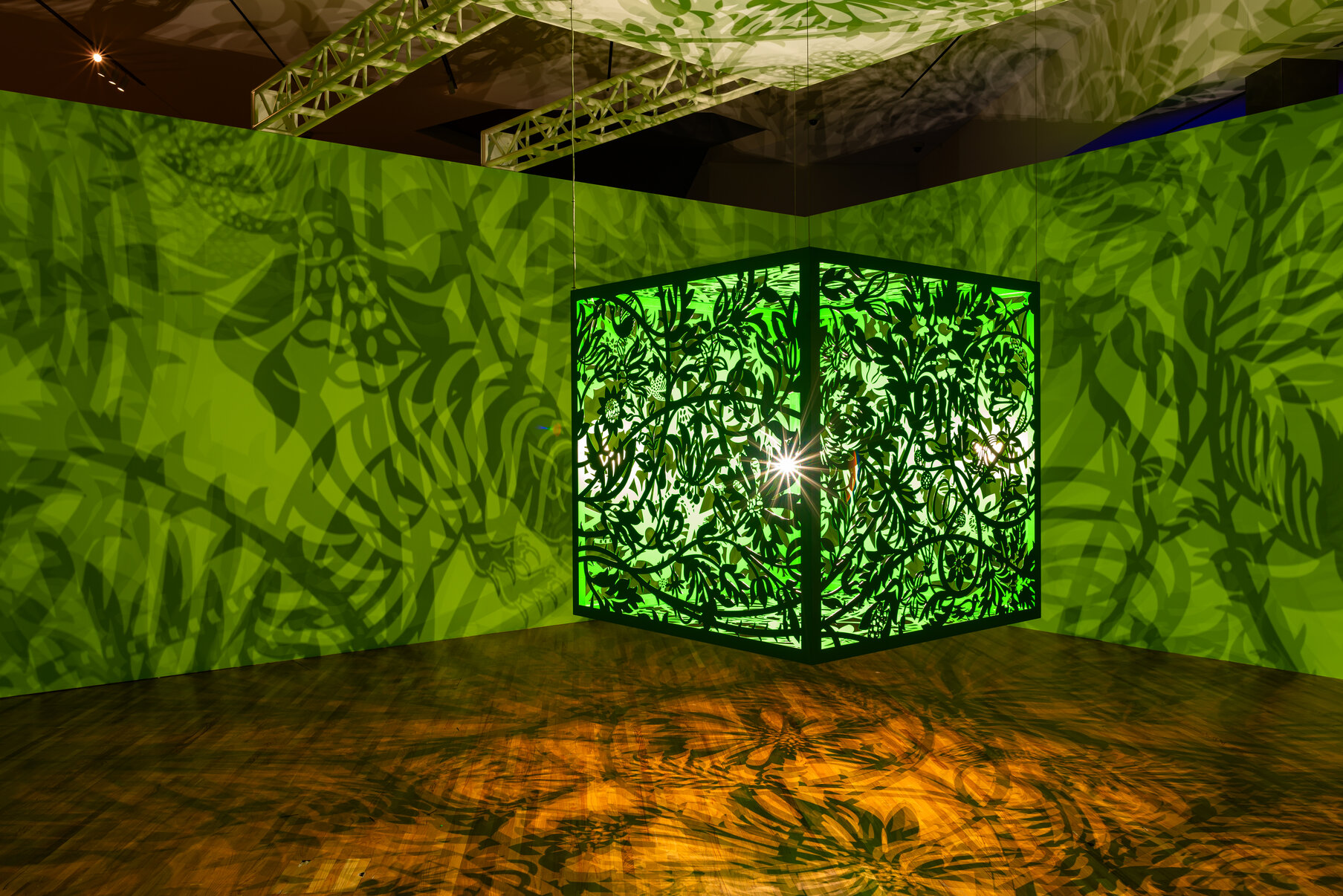by D. Dominick Lombardi, curator and participating artist
September 6 to November 16, 2025
Hammond Museum & Japanese Stroll Garden
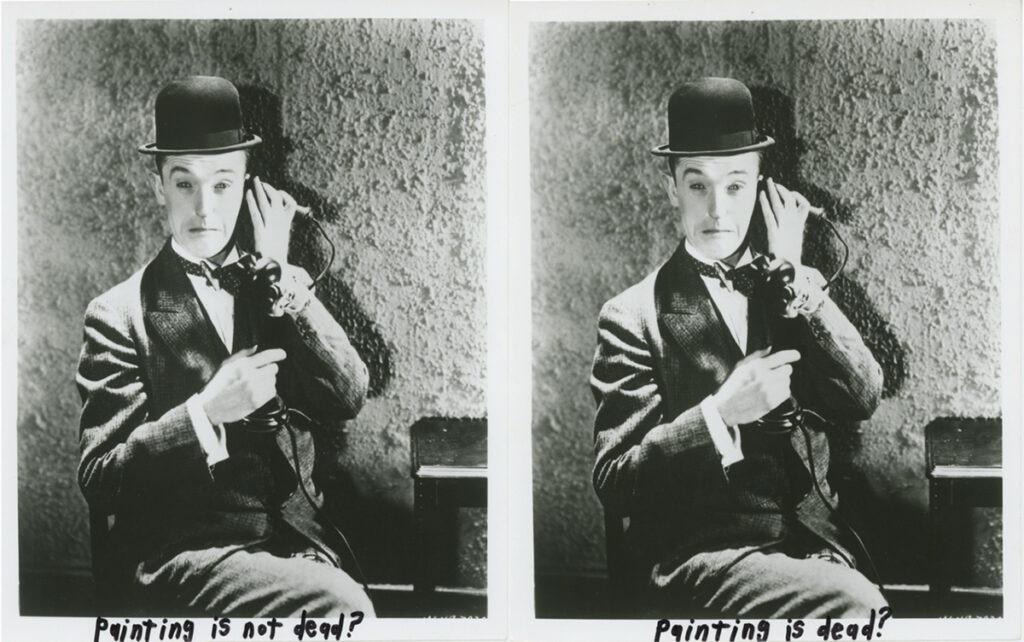
Humor in Contemporary Art is a funny thing. Seriously. An exhibition with humor as its specific theme is not something you often see in galleries or museums. There have been exceptions over the years, where artists like Saul Steinberg, who straddled the two worlds of fine and commercial art with his many brilliant The New Yorker Magazine covers; and the outlandish works of Marisol Escobar and H. C. Westermann who have their own unique brand of humor, can be seen in museums throughout the world – artists that would not have been as successful without the recognition of their wit and humor. Today, some form of humor, albeit on the darker side, can be experienced in the contemporary works of numerous well known artists such as Carroll Dunham, Sarah Lucas, Barbara Kruger, Peter Saul, Erwin Wurm and last, but definitely not least, Maurizio Cattelan, who all have varying levels of dark humor in their creations.
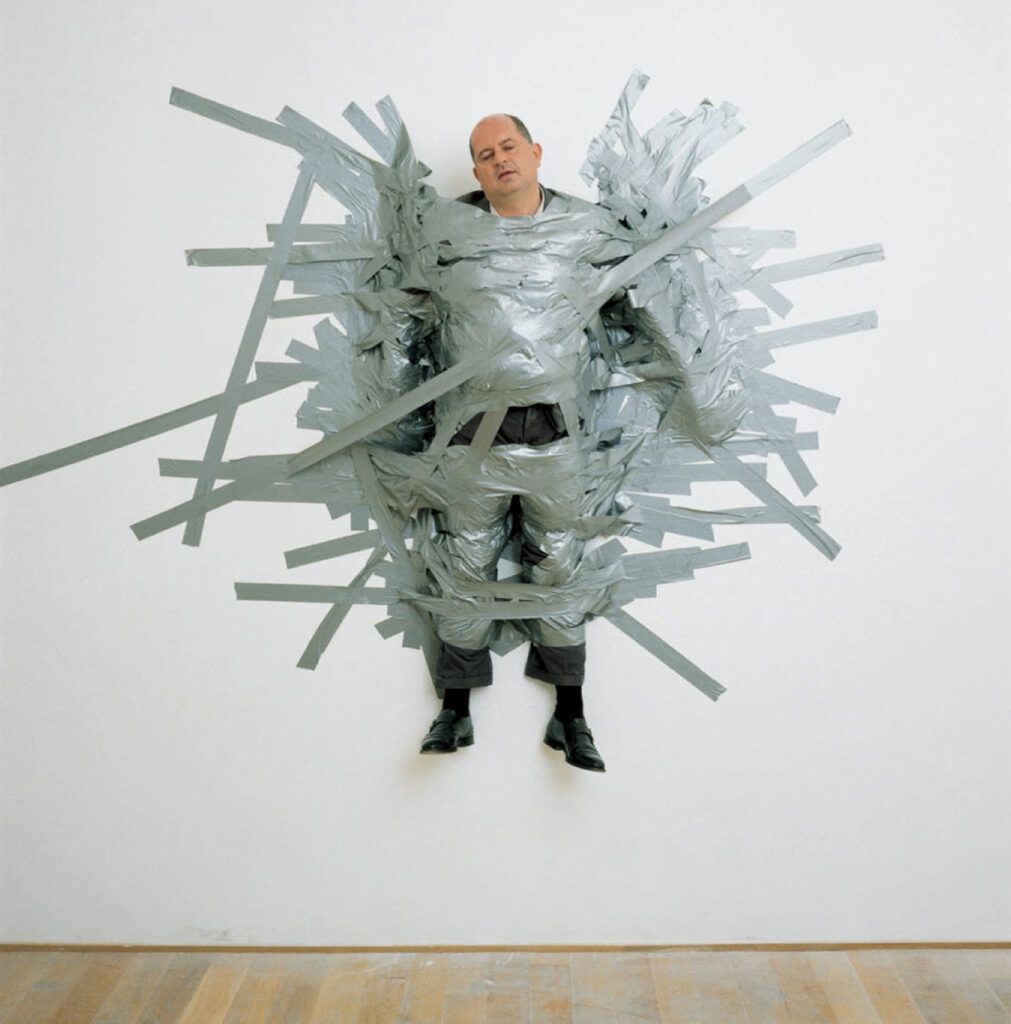
The title of this exhibition, “You Think That’s Funny?,” comes from an email conversation I had with Mike Cockrill, one of the artists in the exhibition, who has been toying with the limits of humor in art since forever. He sees humor and the extent of what can be publicly tolerated as a satisfying challenge. He, like many of the artists in the exhibition, presents us with something to make us laugh privately, but maybe feels a bit uncomfortable when expressed in the public realm.
The artists selected for this exhibition have accepted the fact that there is humor in their art. Using a variety of media, styles, references and messaging, they all have created narrative art that should make visitors at the very least smile, or at times laugh out loud. What is also important to note is the substance beyond the initial humor. Humor only goes so far, so while these artists have your attention you can appreciate the abilities and techniques used in the fabrication of their very intriguing work.
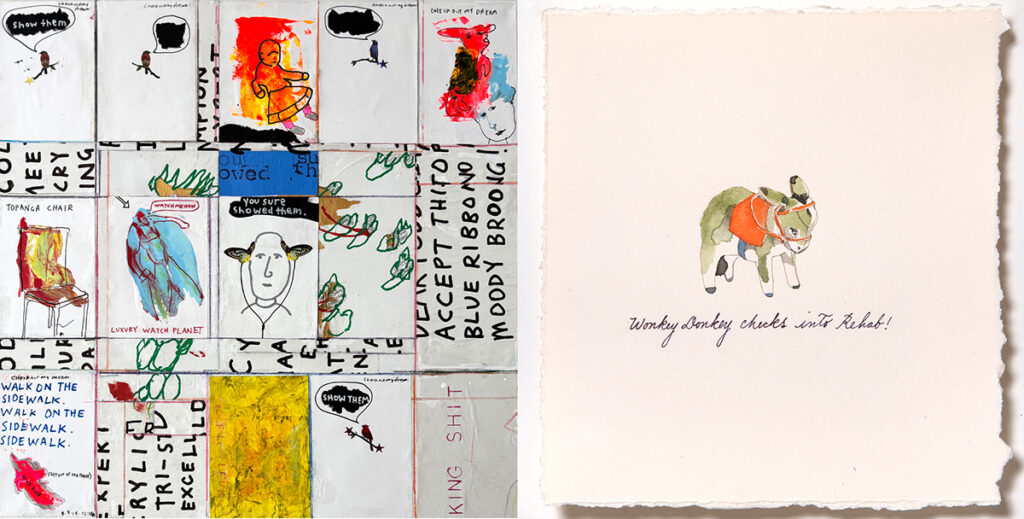
Todd Colby uses words and images to create weirdly symbolic, diaristic mixed media collages, paintings and sticker commentary that all have substantive impact. As a poet, writer and visual artist, Colby blends an endless series of investigative thoughts and images ignited by keen observations that, when added to a common surface, shed a humorous light on the often brazen and hard to bear new realities in our current sociocultural and political landscape. Peregrine Honig also utilizes words and images to create humorous vignettes, however in this instance, Honig’s art is more specific and far more intimate. Working with pen and ink, Gum Arabic and pigment on paper, Honig presents previously innocent stuffed animals in far more mature social situations that many adults can easily relate to. In doing so, humor is maintained, but in a very different light, whereby the source of one’s distinct personality traits, positive and negative, can be traced back to one’s early days at play.
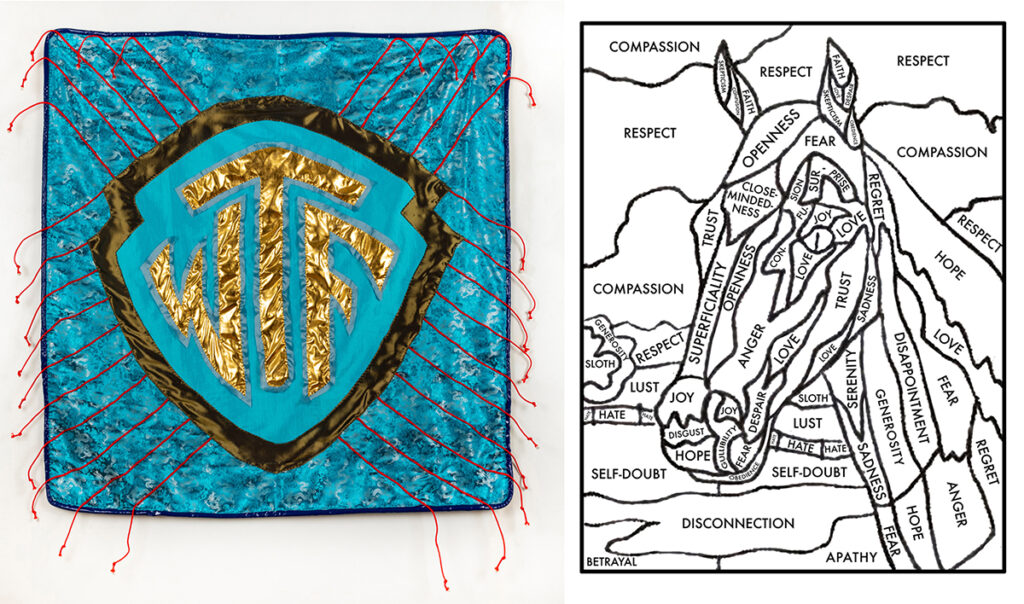
Rita Valley is fed up with the state of our union. Utilizing her skills with fabric and fringes, Valley gets right to the point as she confronts the viewer with familiar terms of dissent. Using fancy patterns, shiny surfaces and heavily textured accents, Valley projects a passionate belief system that is being attacked on all sides. However, at first glance, the feeling one may get from her art is one of a universal, reactionary-type of humor, pulling the viewer in, as they think more deeply about what is hounding their own worlds. The art of Norm Magnusson revals a multi-pronged approach to humor that varies between county fair controversy and lowbrow art bombs to more serious issues regarding our collective state of mind. Magnusson is a master at pairing words and images, contrasting references and recognising timely subliminal links that creep up on you unexpectedly. Magnusson constantly reminds us to stay engaged and to look at the world with both delight and suspicion.
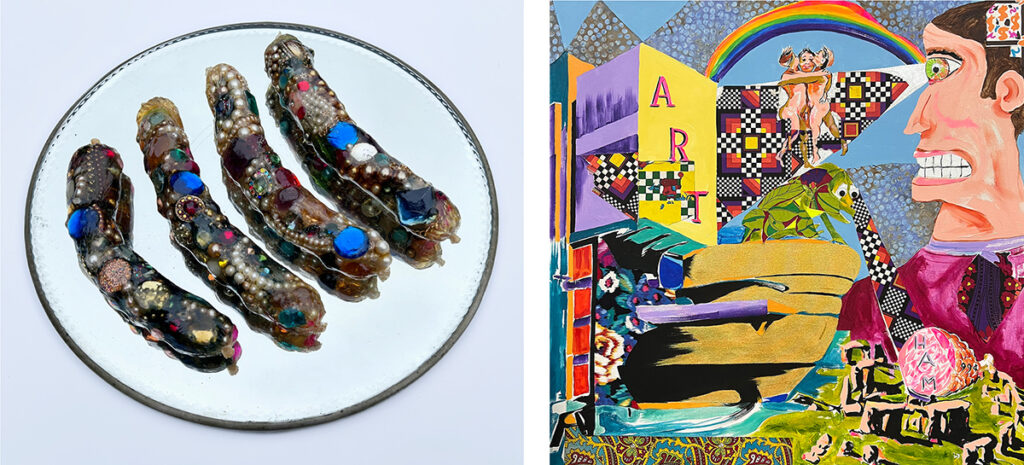
Judy Haberl grew up in a home where food was often extremely experimental, as her father advised NASA on their “food in space program…”. Her family ate “…dehydrated foods to test for edibility,” which were usually godawful, as these early experiences with laboratory food still influences her art to this day. Included in this exhibition are her humorous sausage casings filled with faux jewelry, and whitty Baby Cakes made of colored Hydrostone as she reminds us that it’s all getting too far afield from wholesome whole foods. Bret DePalma pushes his narratives well past reason. Nothing fits, yet it all works once his paintings are completed. No color, perspective, symbol or representation is off the table, as he weaves through uncharted spaces that sweep across his mind. The humor, which is very complex and layered, begins slowly and tentatively as the viewer comes to terms with what is in front of them as they wonder where all this wizardry comes from.
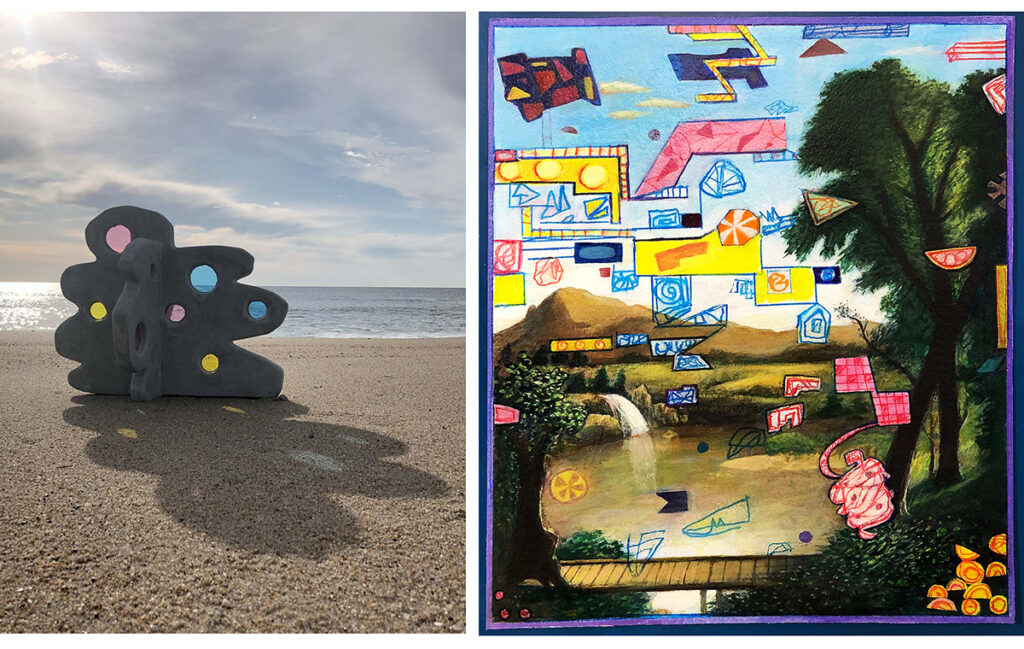
Susan Meyer’s sculptures have a B-movie type futuristic look to them that feels timid in one way and grandiose in another. A bold mix of emotions that gives her work a unique sort of humor that is subtle but effective. This is not to say that there is no depth here, there is, and much of it as exemplified by elements of High Modernism as a distinct placeholder, especially with respect to the aesthetic, while the presentation of materials in their curious shapes and colors adds contrasting notes of frivolity and seriousness. Jeff Starr creates mixed media paintings that feature multiplanar realities. These planes, which could not be more different, shift back and forth between an idealized ‘real world’ and an imagined astral plane that transcends what is considered normal processing of space and time. This overlapping of universes forms a visually halting transition, perhaps the way alien space travelers may perceive our world on their terms, focusing more on unknown elements we can not see, while turning the whole thing into an absurd visual conversation.
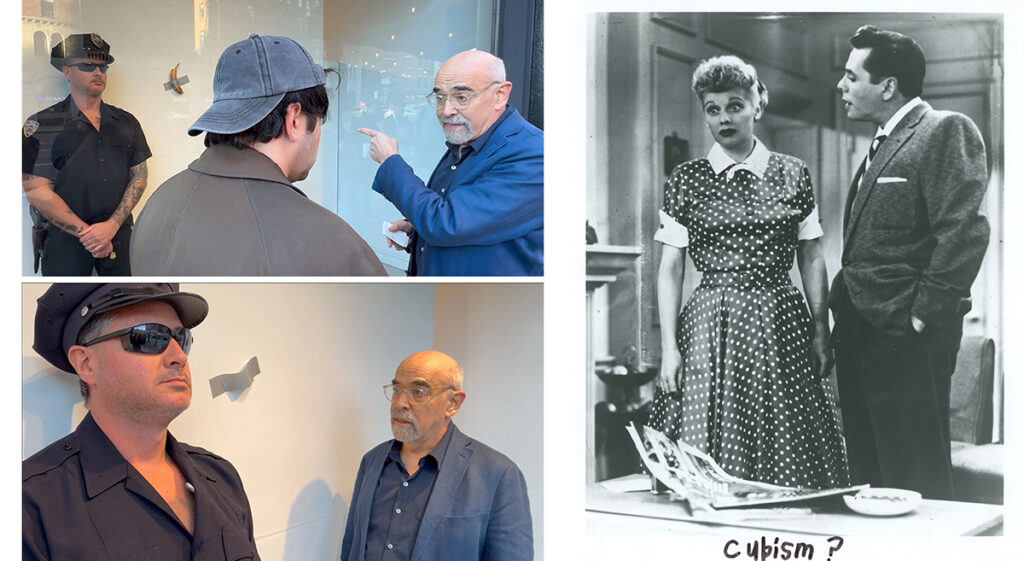
Jim Kempner, a well known, decades long art dealer on the corner of 23rd Street and 10th Avenue in New York City’s Chelsea District, is one of the more colorful individuals on the scene. A passionate purveyor of prints, sculptures, drawings and paintings, Kempner sees the humor in his daily reality and does something about it. His seven season video series, The Madness of Art, is a much needed breath of fresh air, a break from the austere atmosphere NYC gallery’s too often project when coming face to face with the general public. Cary Leibowitz uses words masterfully, and we never know if he is being cheeky or in the middle of a crippling crisis. Or is it both? Either way, Leibowitz’s art will forever stir things up by disrupting the viewer’s typical train of thought. Whether it’s cute stuffed animals, symbolic ceramics, intricately cut placards, pennants, paintings, shopping bags or an all out outdoor installation, Leibowitz leaves us with an indelibly blazing, bold and unexpected mark on many things searingly sociopolitical to the brilliantly benign.
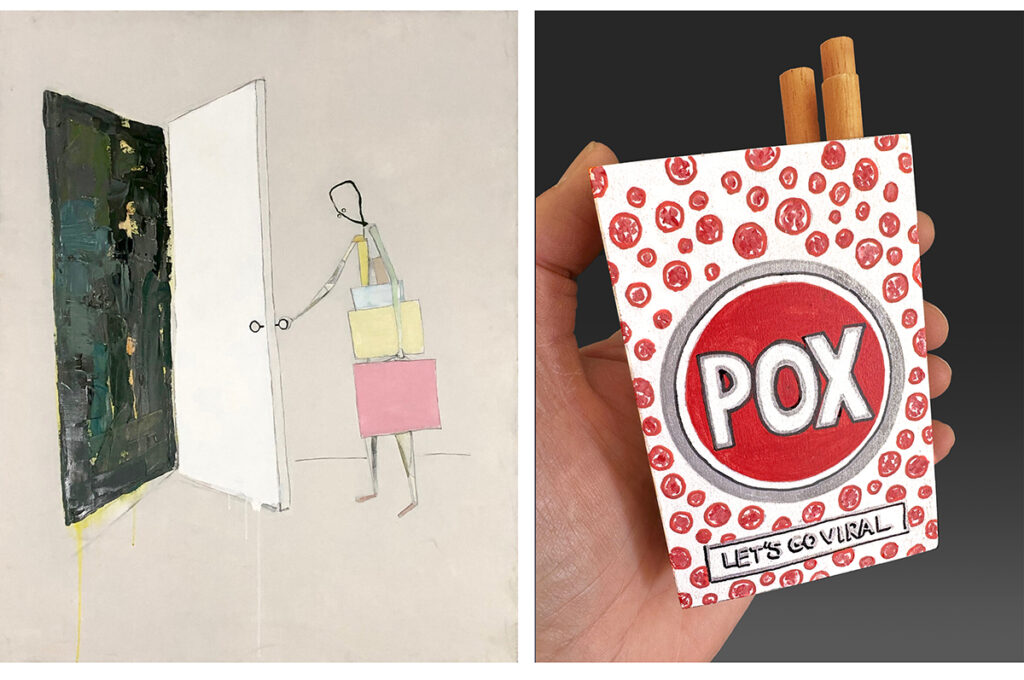
Mike Cockrill’s art portrays feelings of hopelessness, futility, ecstasy or enlightenment. Using easily recognizable figures like clowns and the typical office worker stuck on a never ending wheel to nowhere, Cockrill strikes at the heart of the circumstances he presents in ways that will make the viewer smile or laugh at first, until the weight of the situation breaks through. After that, it’s back to the humor in a continuous cycle of responses that would never be as potent if not for the clever, straightforward, high quality of Cockrill’s art. Mary Bailey’s primary medium is painted or scribed wood that, when messages or symbols are added, has anywhere from unique tinges of Surrealism to a persuasive form of Pop. In her most recent series of symbolic cigarette packages, Bailey sends powerful socio-political statements utilizing her own brand of dark humor to make her point, concerns that are growing more and more troubling every new day. In the end, Bailey dives deep into realities that are best served with a little humor or all is lost.
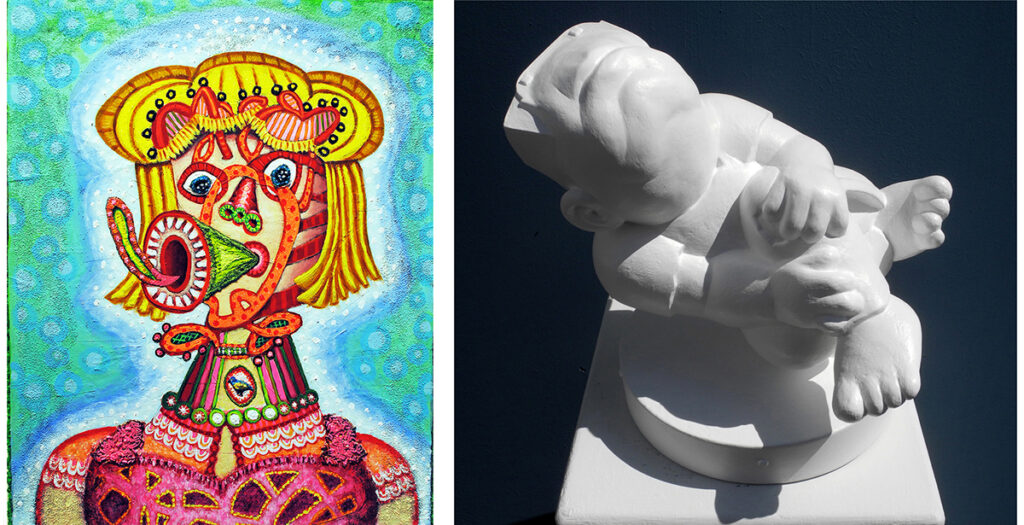
Cathy Wysocki makes art that swings back and forth between fear and fantasy. Wild colors and crazy narratives somehow make everything oddly copacetic. The limits of which are stretched to the breaking point in every imaginable way. Hideous/Beauteous comes to mind here as Wysocki weaves her way through highly textured surfaces where emotions run raw and rampant propelled by a limitless and lively aesthetic. Very often in my paintings and sculptures, humor is presented as a prompt or a reward for looking at the art. With the sculpture CC 113 UC (The Impossibility of a Skinned Knee) (2021), I take a shot at the art world in general, and Damian Hirst specifically by making reference to his most famous early work The Physical Impossibility of Death in the Mind of Someone Living (1991) where a tiger shark is suspended in a clear glass and steal tank filled with a 5% solution of formaldehyde.
